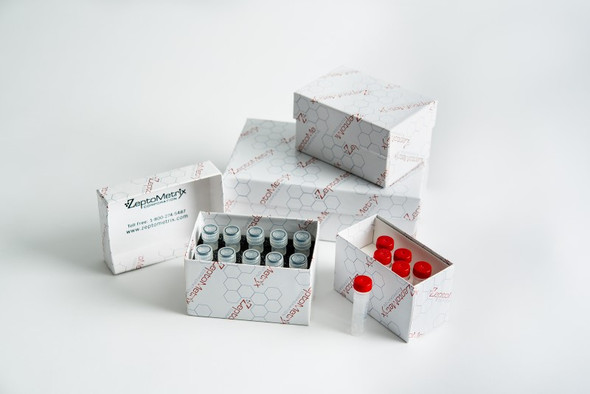Description
RESPIRATORY SYNCYTIAL VIRUS B LYSATE
Respiratory Syncytial Virus B Lysate is purified from Vero cells using sucrose density gradient ultracentrifugation, disrupted in the presence of detergent and heat inactivated. Viral lysates can be utilized as an antigen, as a source for the purification of viral proteins, or for the detection of viral antibodies.
PRODUCT DETAILS – RESPIRATORY SYNCYTIAL VIRUS B LYSATE
- Purified Respiratory Syncytial Virus B Lysate.
- Purified by sucrose density gradient ultracentrifugation.
- Heat-inactivated and verified using validated tissue culture infectivity assays.
- Appropriate for the development of immunoassays, Western blotting, dot blotting and other protein-based assays.
BACKGROUND
Respiratory syncytial virus (RSV, also known as human orthopneumovirus) is a negative-sense, single-stranded RNA virus belonging to the Pneumoviridae family. RSV is a medium-sized virus (120-200nm) and includes a viral envelope. The RSV genome is approximately 15kb in length and encodes 10 genes and 11 proteins. From 3-5’, the genome encodes the non-structural proteins 1 and 2 (NS1, NS2), Nucleoprotein (N), Phosphoprotein (P), Matrix protein (M), Small hydrophobic protein (SH), Glycoprotein (G), Fusion protein (F), Matrix protein 2 (M2), and Large protein (L) (Borchers et al. 2013). There is only one RSV serotype, which includes the major antigenic subgroups A and B (Gilca et al., 2006). In temperate climates, RSV transmission shows a distinct seasonality with typical onset in late autumn to early winter, and a peak between mid-December and early February. In the USA, 60% of infants are infected during their first HRSV season It is generally believed that most children will have experienced at least one RSV infection by the age of 2 years (Borchers et al. 2013). Of those infected, 2–3% will develop bronchiolitis and require hospitalisation. The resulting natural immunity is protective but wanes over time, such that people can be infected multiple times. Possible co-infection of respiratory syncytial virus and severe acute respiratory syndrome coronavirus-2 (SARS-CoV-2) has been reported (Burstein et al., 2020).
REFERENCES
- Burstein et al.(2020). Presumed respiratory syncytial virus and severe acute respiratory syndrome coronavirus-2 co-infection in a critically ill infant: Diagnostic uncertainty and emergency management. CJEM. 2020 Jul 8 : 1–3.
- Borchers, AT. et al. (2013). Respiratory Syncytial Virus—A Comprehensive Review. Clinical Review of Allergy Immunology. 45(3): 331-379.
- Gilca, R. et al. (2006). Distribution and Clinical Impact of Human Respiratory Syncytial Virus Genotypes in Hospitalized Children Over 2 Winter Seasons. Journal of Infectious Disease. 1;193(1):54-58.






